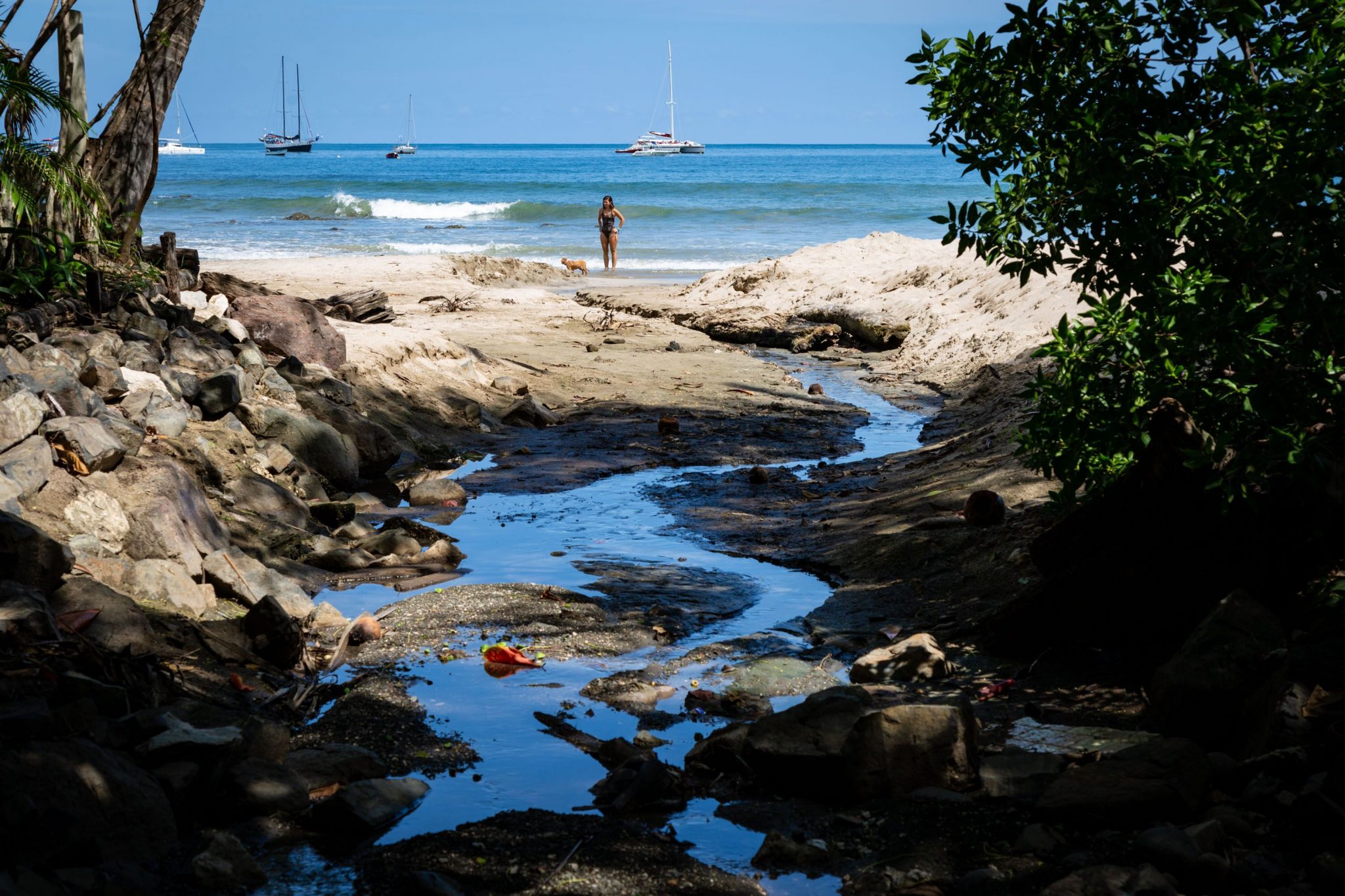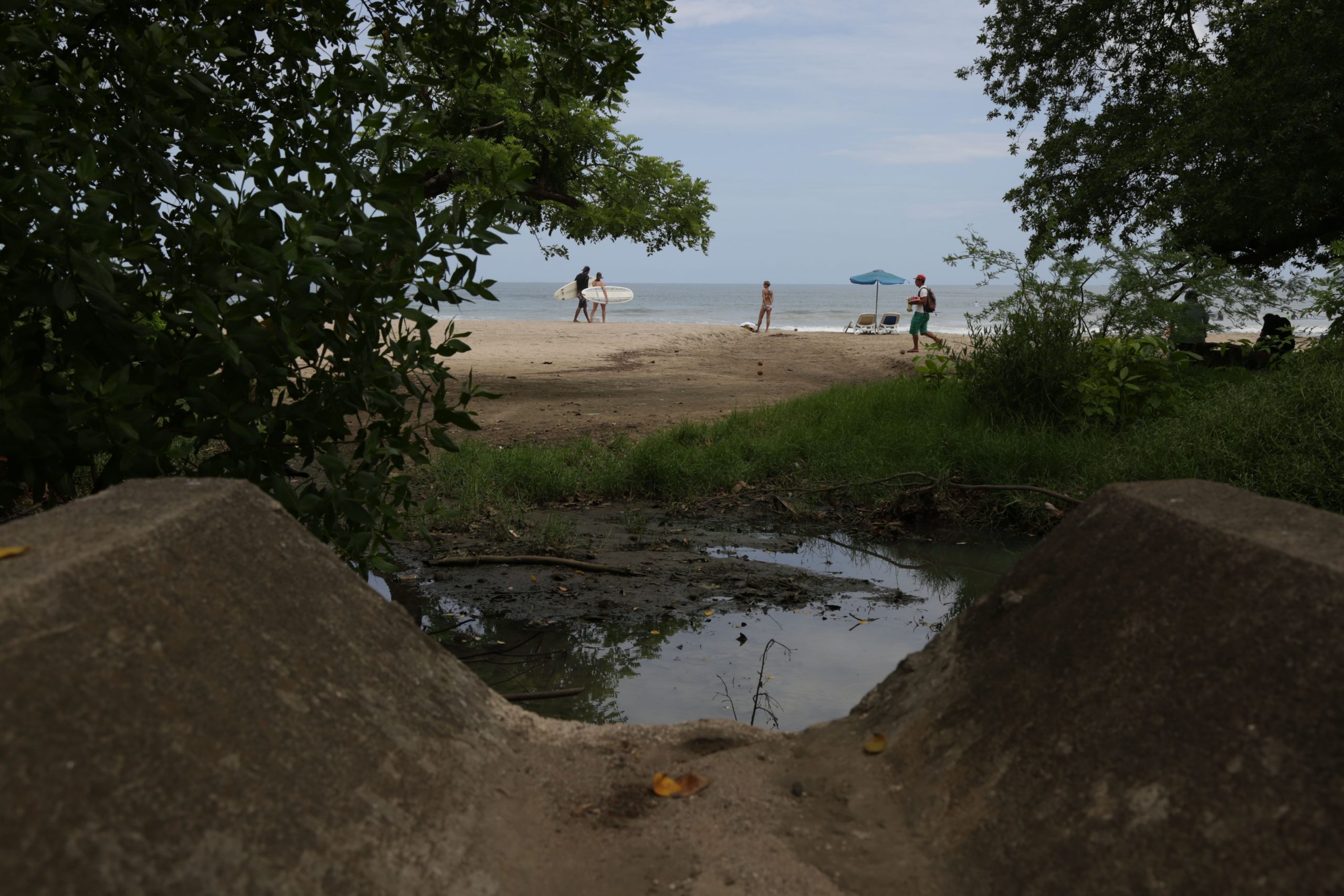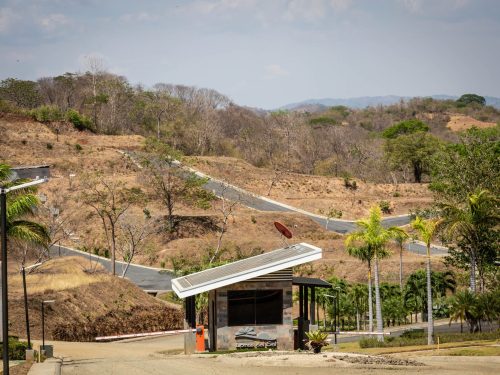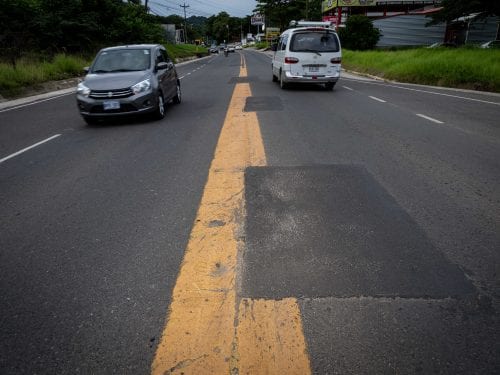
In August of 2020, the Constitutional Court gave the Ministry of Health six months to implement a definitive solution to wastewater contamination in Tamarindo. However, the sanitary sewer system to put an end to the problem won’t arrive until 2026.
That is what is foreseen by the Aqueducts and Sewers Institute (AyA- Acueductos y Alcantarillados) in the project implementation schedule. Although the court decision was directed to the Ministry of Health, the institution gave the order to AyA because they affirm that the only way to remedy the historical problem is building the sewer system.
“Although the court gave six months, it’s impossible to carry out the project in that interval,” said the director of the Santa Cruz Area Health Administration, Warren Chavarria.
In many cases, we don’t know where the wastewater comes from because it’s a tangled mess. What’s in Tamarindo is like a labyrinth. Studies have to be done to determine where the wastewater comes from and consider the project with the particularities of Tamarindo, which is on the coast,” he added.
Until the first half of 2022, the project will continue in the stage of pre-investment studies and final designs.
“Its results will allow later phases of the project to begin, including managing the source of financing and the pre-execution and execution (construction) stages,” said the AyA Sanitation Design Area via email in response to inquiries from The voice.
The institution also has to acquire land, evaluate environmental viability and financing.
In total, the work will cost about ¢7 billion (about $11.7 million), of which ¢300 million (about $500,000) will come from AyA’s own funds for land acquisition and the constitution of easements (rights of way through private land, for example, to install a pipeline) and ¢6 billion (about $10 million) will come from external financing for pre-investment studies and construction.
Mitigative Measures
Tamarindo has experienced fast growth with little planning of infrastructure for hotels, businesses, residencial areas and even visitors. “Having wastewater management wasn’t projected, and it’s quite a large burden,” said Chavarria.
The Tamarindo Development Association (ADIT- Asociación de Desarrollo de Tamarindo) estimated that 3,500 people lived in the community in 2000 and the number increased to 7,600 in 2019, not counting visitors, which could bring that figure up to 100,000 people per year.
The Area Health Administration only provides temporary solutions to avoid an unmanageable overflow of the problem. Chavarria calls them “individual solutions.”
During 2021, three sanitary orders have been issued, of which two are pending. But there might be other unresolved ones from previous years, Chavarria commented.
The Municipality of Santa Cruz has been in charge of one of the pending orders since last year. “The municipality is making the designs and plans to rebuild a stormwater sewer that had been built by a developer, to which businesses and neighbors were connected,” commented ADIT’s project manager, Eduardo Vargas.
We expect that to end no later than next year. We are working with the municipality and telling the neighbors and businesses that they have to correct their problems because soon they won’t have a place for their water to go,” he added.
ADIT is also managing acquisition of resources to start a couple of projects that will improve the wastewater deposit: bioplanters and some wire meshes to place in the stormwater sewers so as to prevent solid waste, such as mud, leaves, bottles and cans, from reaching the ocean.
“Bioplanters are like a treatment system with plants that purify the water that arrives there before it goes to the sea. We already have the science of how to do it. Right now we are calculating costs to see how much each of the nine that we are thinking of doing costs, which will be in the nine most critical points,” explained Vargas.

ADIT has identified nine critical points where wastewater reaches the beach. Photo for illustrative purposes. Photo: Cesar Arroyo Castro
Community Management
When someone files a complaint or the Area Administration detects a discharge of wastewater (be it sewage or soapy water), they identify the source and issue a sanitary order to look for a solution.
“There is a bad habit of only connecting the sewage to the septic tank but not the soapy water, which in general is discharged into a drainage ditch,” said Chavarria. “The ideal is for these waters to be connected to the drainage so that they are filtered and don’t go to the public roadway, much less to the sea, in Tamarindo’s case.”
When people dispose of wastewater well —in cases where there is no sanitary sewer system— “it is contained like in a pit with rocks and sand. It’s a traditional system,” explained Chavarria. In other words, it’s a less sophisticated way of handling it than a sewage system but, with the current possibilities, it’s the best option.
The director indicated that if businesses and houses continue to mismanage wastewater, the community “is shooting itself in the foot.”
They make a living from tourism and these activities pollute the beach and its surroundings. In the future, we’re going to have such a serious impact that it could lead to the area not being attractive to tourists and that would generate economic problems,” Chavarria pointed out.
Lawyer Walter Brenes, who filed the appeal for protection that resulted in the August 2020 Constitutional Court decision, told The Voice that he continues to monitor progress on a solution and that one of his biggest concerns is that the project might never happen in the end.
If you notice poor wastewater disposal in this community or elsewhere in Santa Cruz, you can report it to the Area Health Administration at 2680-0160 or by emailing [email protected]







Comments